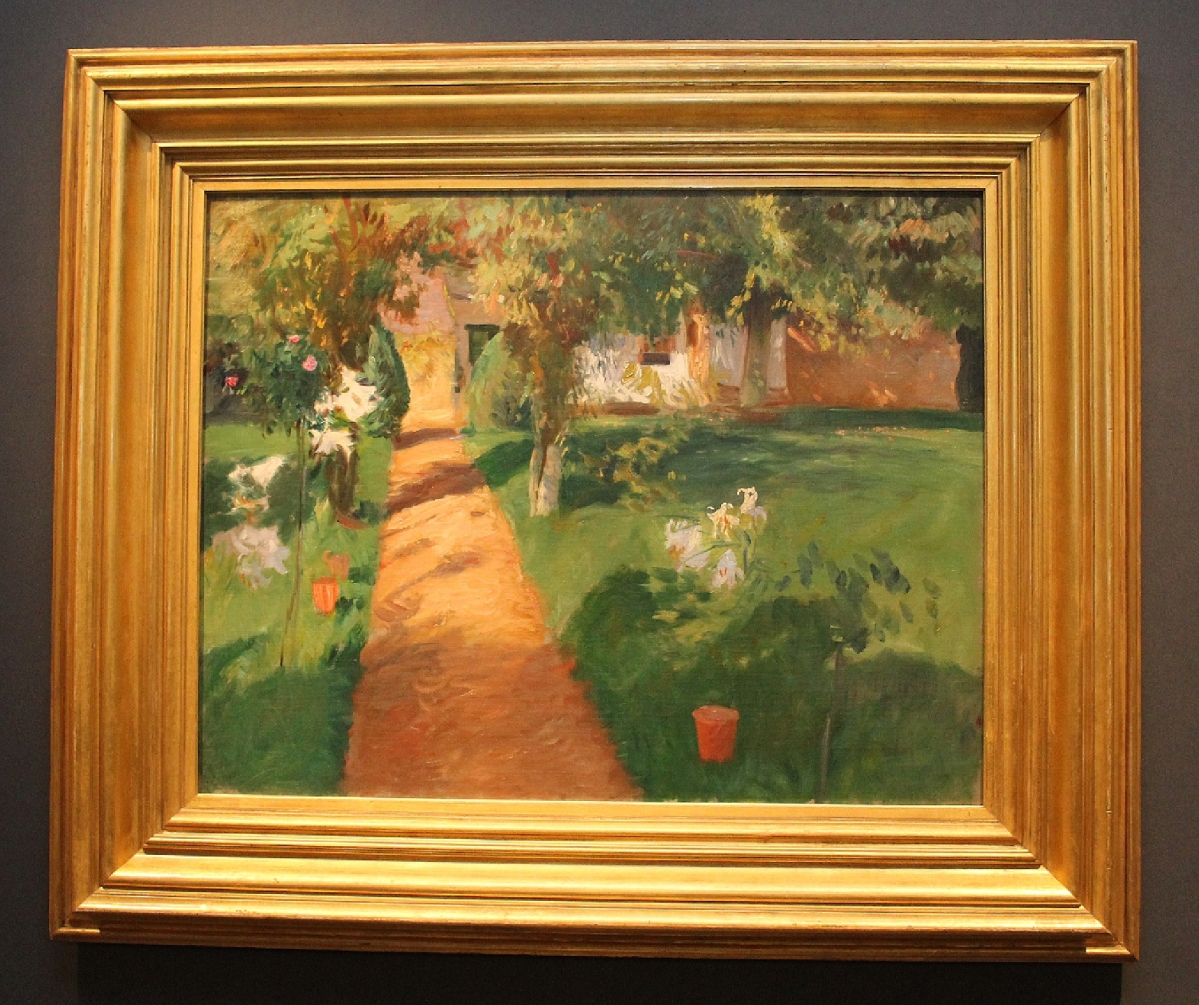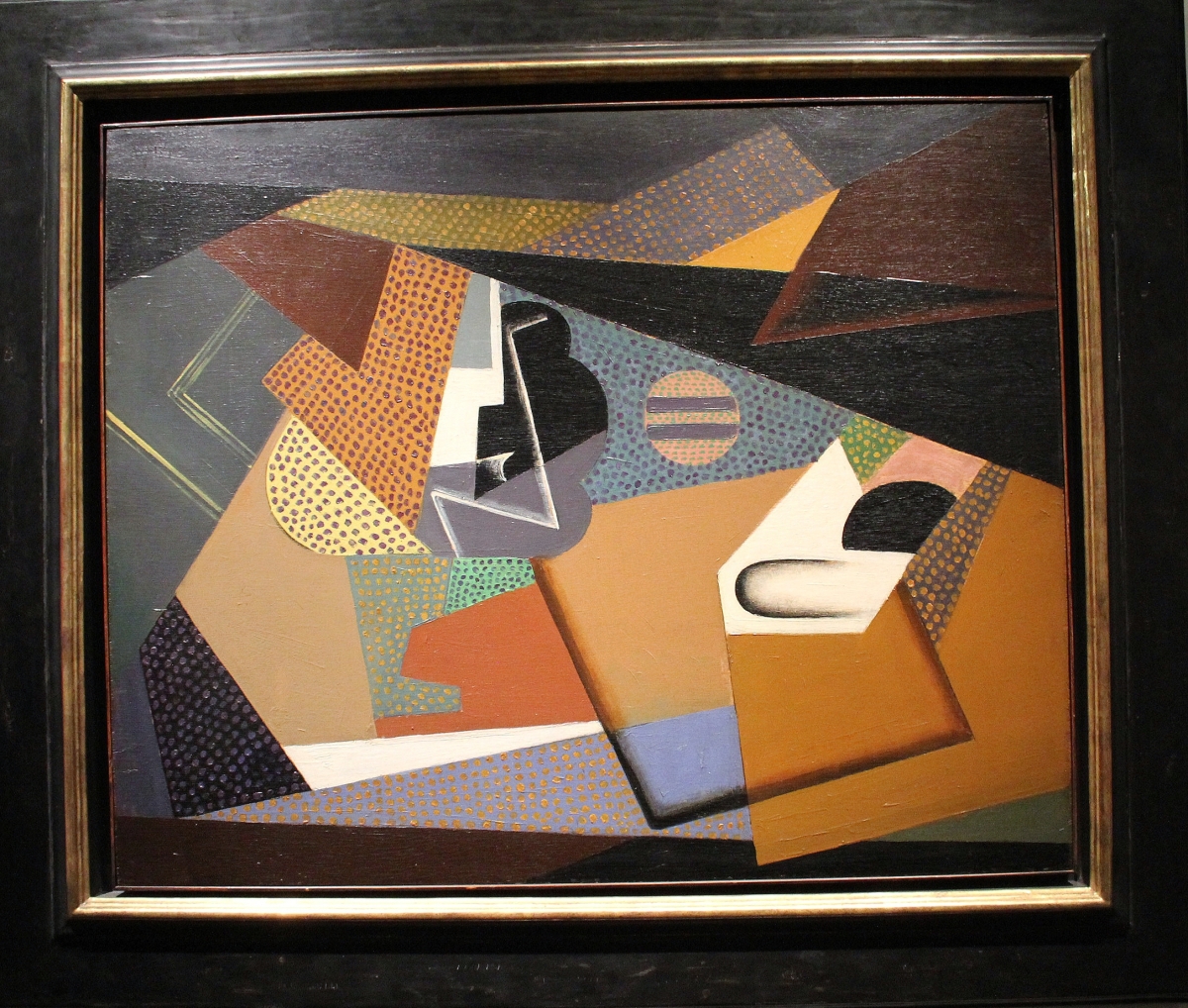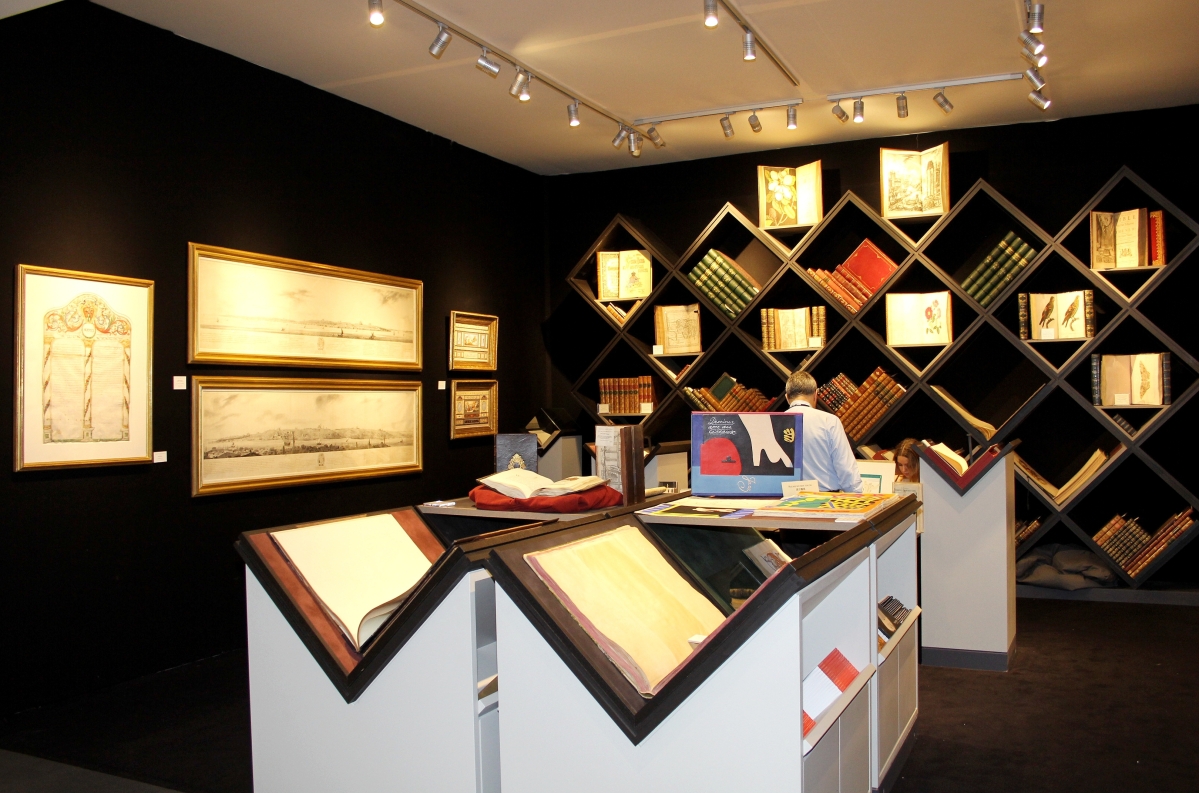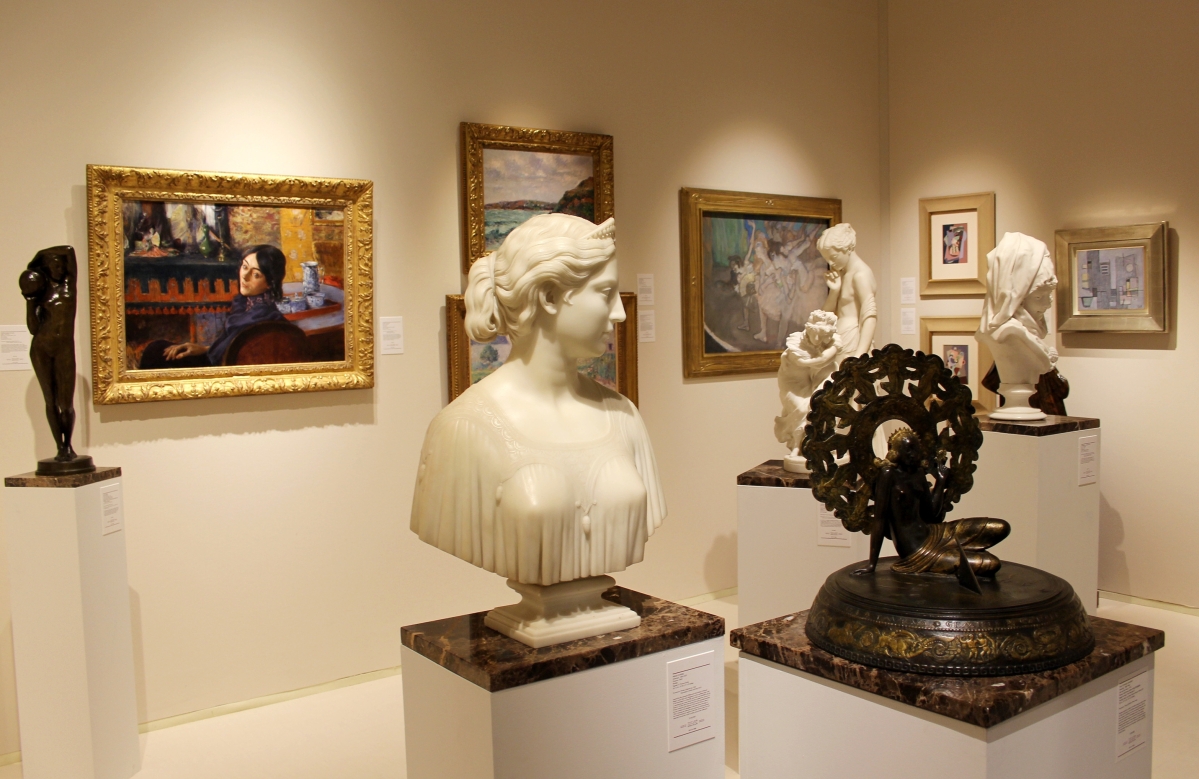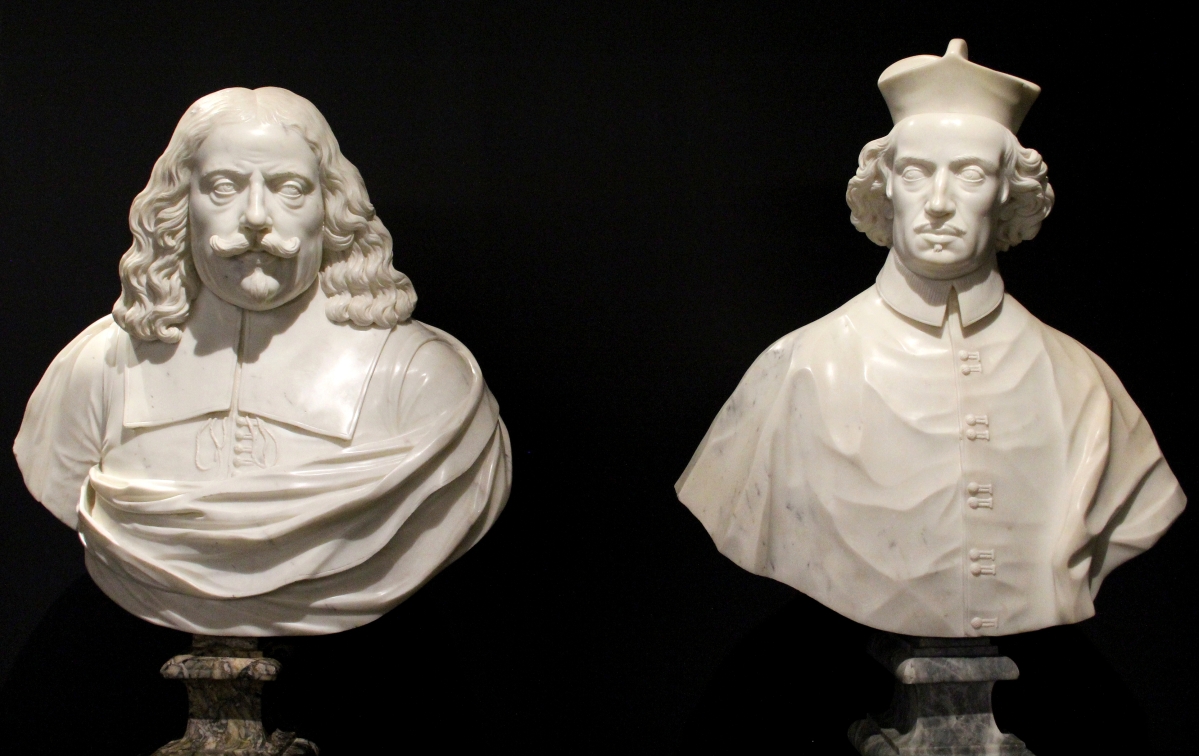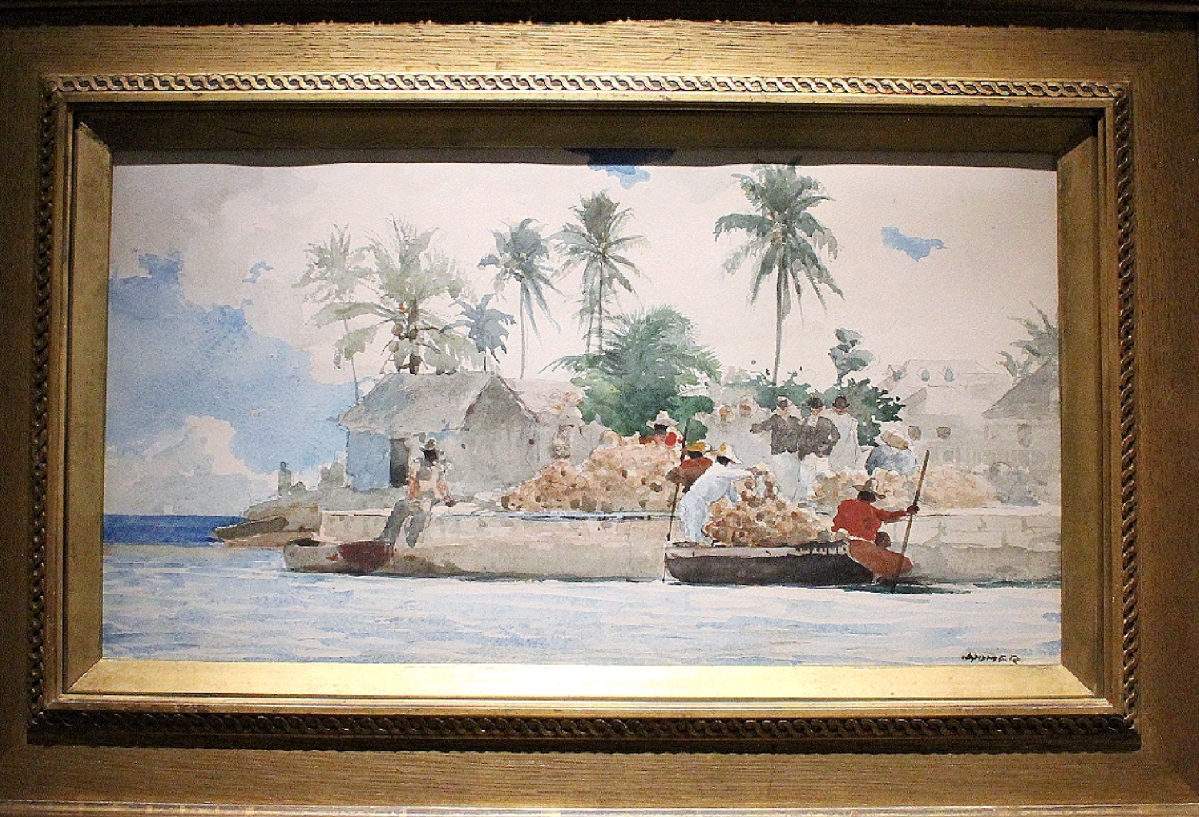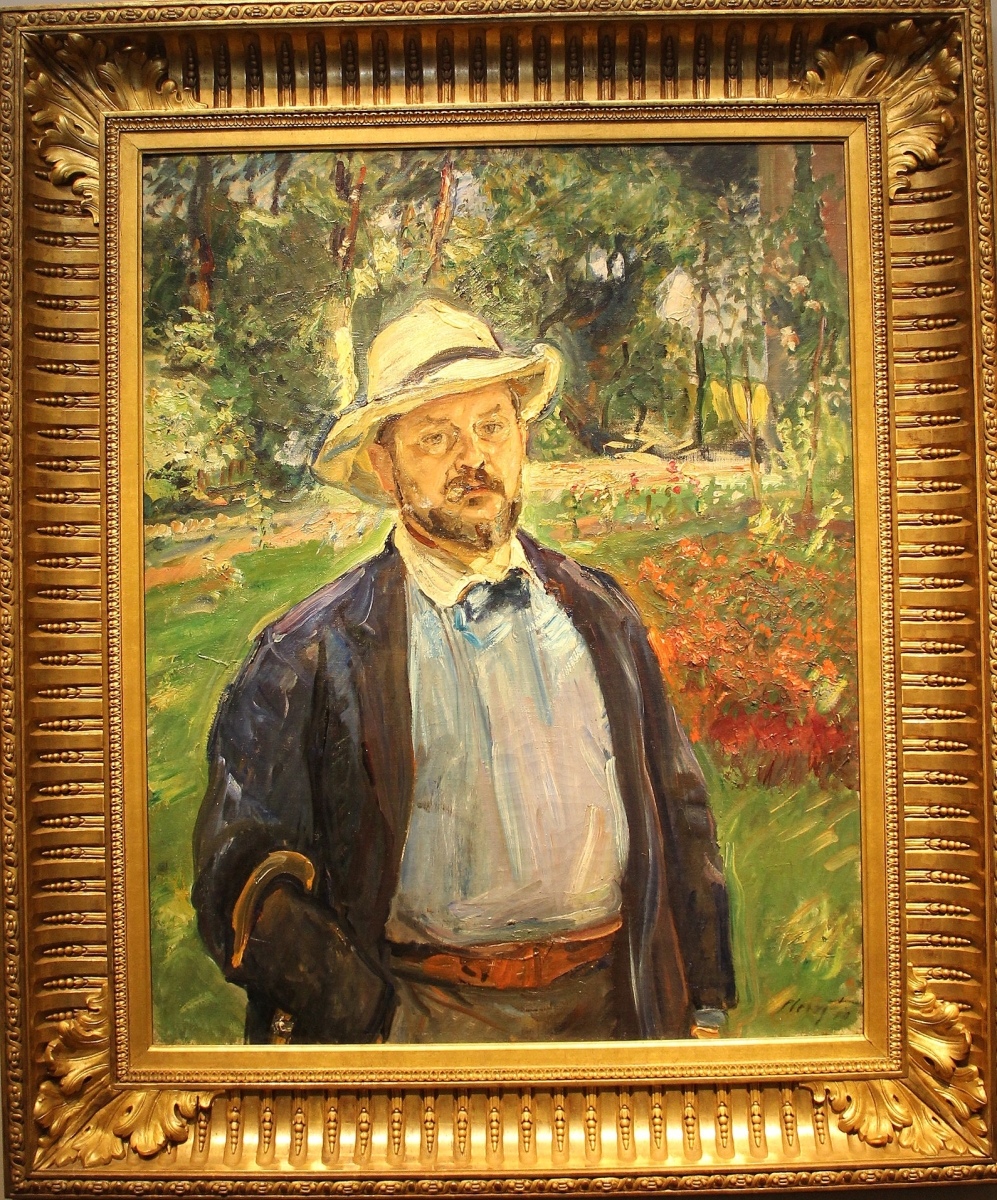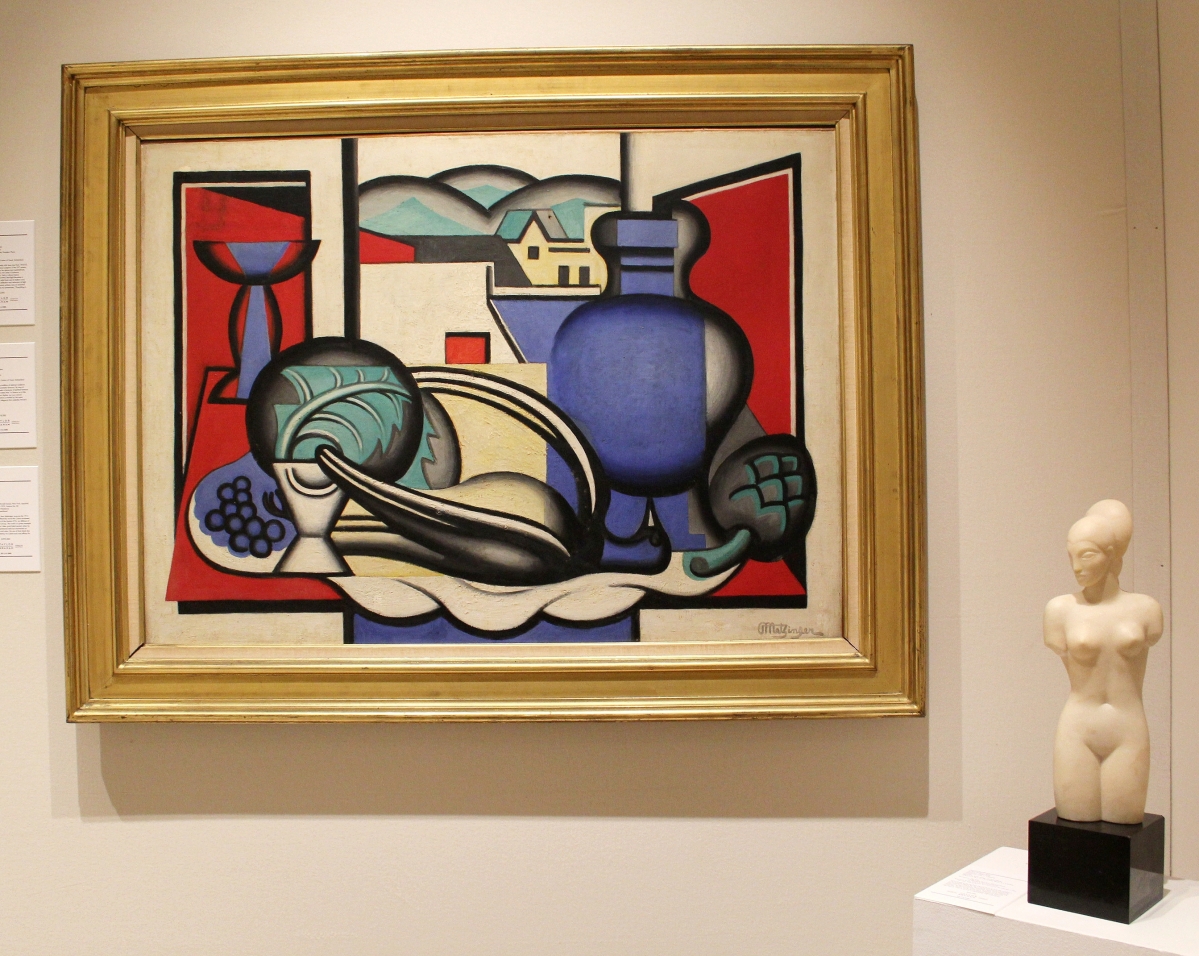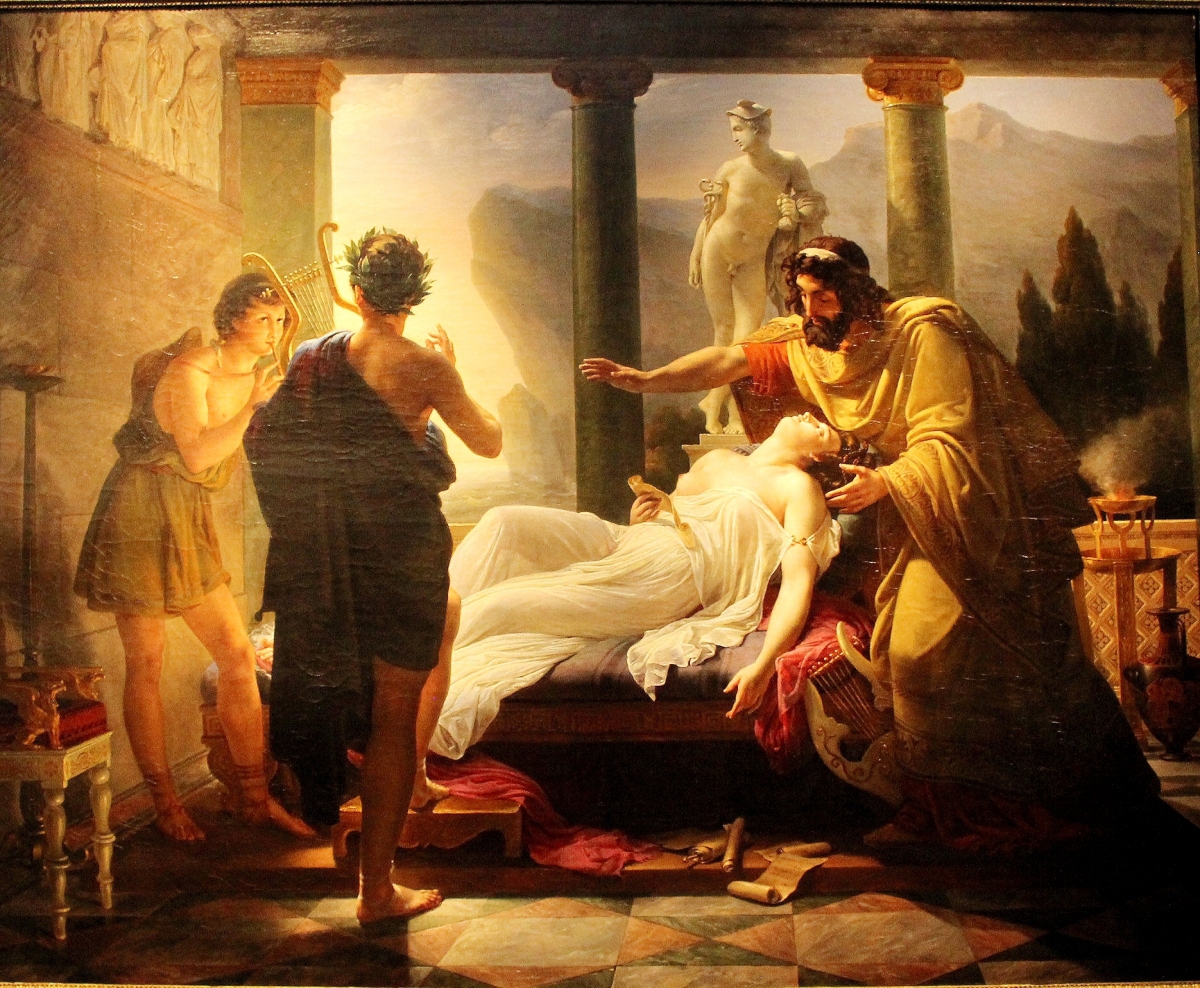NEW YORK CITY — Ars longa, they say, and so we would like to believe. But if beauty is eternal, taste is also fickle, subject to the whims of fashion. Thus TEFAF’s debut at the Park Avenue Armory from October 22 to 26 was thrilling for fans of historical art, who over the past decade have watched with a mix of envy and disbelief as big money and whim flocked to contemporary art.
The first New York edition of TEFAF, short for The European Fine Art Fair, was an artistic triumph. Whether over time it will be a commercial success remains to be seen. The odds are long. But over five days at the Park Avenue Armory (six, if you count Thursday’s VIP preview) the fair’s ambitious organizers and exceptional cadre of experts — 94 from 14 countries — made the old seem new again, a not insignificant feat.
First, a bit of background. The original pioneers in this space were Anna and Brian Haughton, whose International Fine Art and Antique Dealers Show put all others on notice when it debuted at the Park Avenue Armory in 1989. The Haughtons’ no-expenses-spared presentation and emphasis on rigorous vetting was a game changer. The International Show having run its course, the Haughtons in 2015 ceded their fall dates in New York to TEFAF and its American partner, Artvest, the investment advisory firm headed by Michael Plummer and Jeff Rabin.
TEFAF New York Fall builds on the legacies of TEFAF Maastricht, the 28-year-old Dutch fair considered the world’s top venue for historic art and design, and the International Show. Many of the top European dealers who participated in TEFAF New York Fall are past or present Haughton dealers. That said, the new TEFAF show was distinctive in presentation and content. The Haughton fair, at least in the beginning, emphasized stately Eighteenth Century English, French and Italian furniture. TEFAF Fall New York was a pictures and objects show, with sculpture as a strong suit.
Amsterdam-based designer Tom Postma was responsible for the truly innovative look of TEFAF New York Fall. The Postma firm is responsible for the appearance of Art Basel in Hong Kong and Miami Beach, Design Miami Basel, Frieze Masters in London, Masterpiece London and TEFAF Maastricht, among others. Postma as a symbol of, and TEFAF as a vehicle for, the art world’s rapid globalization is a story for another time.
Postma shows have a distinct DNA. There is the profuse use of cut blooms, a Dutch staple, common to Maastricht and New York, and up-lit white fascia boards, a hallmark of London and New York. Postma’s clean, uncluttered design for TEFAF New York employed yards of white scrim and oyster-shell-colored carpet. TEFAF New York’s spare black and white logo called to mind Chanel, which seemed like a bit of graphic trolling given that the former president of the cosmetics giant is Arie L. Kopelman, chairman of New York’s Winter Antiques Show.
Postma’s breakthrough contribution to Manhattan was a radical new floor plan for the Park Avenue Armory, traditionally limited to roughly 65 exhibitors and small compared to the venues housing TEFAF Maastricht, Masterpiece London or Frieze Masters. Postma made brilliant use of the Armory’s second floor, installing a dozen dealers and a loan exhibit mounted by Amsterdam’s Rijksmuseum in intimate gallery settings. Pocket doors on the second floor were left open, framing views of the activity above and below, and visually connecting the two spaces. Fewer shoppers seem to have found the four exhibitors in the first-floor hallway fronting the drill hall. In another innovation, largely successful, the Armory’s historic reception rooms were pressed into service as a café, restaurant and VIP lounge.
Striking presentation extended to individual exhibitors. If there had been a prize for best booth, it would have gone to Phoenix Ancient Art, which replicated Rome’s Pantheon, complete with its oculus-pierced dome. At the center of Phoenix’s grisaille-colored rotunda was a Greco-Roman figure of Aphrodite. Once owned by the Duke of Northumberland, the statue, priced in the seven figures, was an early sale for the Swiss dealer, who also sold Greek Corinthian helmets to buyers from New York, California and Mexico for prices ranging from $200,000 and $350,000.
With booth rents rising, shared booths are becoming more common at the top fairs. Of the handful of joint ventures at TEFAF New York Fall, the most striking belonged to Maison Gerard in partnership with Carole Thibaud-Pomerantz. Their theatrically Bohemian display mingled French Art Nouveau furniture and accessories with the vintage wall coverings that presumably inspired early Twentieth Century aesthetes. Upstairs at the Armory, Julius Böhler, Blumka Gallery and Georg Laue mingled their inventories to create a wunderkammer of medieval and Renaissance treasures.
Only a handful of exhibitors offered American art and artifacts. One of the most notable presentations belonged to Hirschl & Adler, which hung Edward Hopper’s sensuous 1916 portrait of dancer Betalo Rubino over a newly discovered Philadelphia recamier, probably the work Anthony Quervelle, circa 1825–30. Susan Menconi and Andrew Schoelkopf delighted with watercolors by Winslow Homer and Maurice Prendergast and an oil painting by John Singer Sargent. Bernard Goldberg Fine Arts sold Edward Hopper’s circa 1904 portrait of fellow artist Guy Pène du Bois, marked $1.5 million.
On opening day, curator Alice Cooney Frelinghuysen visited the show with Beth Carver Wees and other colleagues from the Metropolitan Museum of Art’s American Wing, stopping at Lillian Nassau and at S.J. Shrubsole, where the experts inquired about an exceptional silver and mixed-metal vase designed by Edward C. Moore for Tiffany & Co. around 1878. Marketing to institutions was an effective cornerstone of TEFAF New York’s overall promotional strategy. According to Tara Heffler, the show’s operations manager, 260 museums were invited and many came. Additionally, TEFAF coordinated with the city’s top museums to offer a lively program of presentations by and for connoisseurs. Luke Syson, chairman of European sculpture and decorative arts at the Metropolitan Museum of Art, kicked off TEFAF Week with a talk on collecting.
Richard Huber, a New York-based collector of Latin American art, was overheard conversing in Spanish with the proprietors of Eguiguren, the Argentinian dealer in historic South American silver, paintings, textiles and works of art. With American museums from Brooklyn to Los Angeles building their holdings of Spanish Colonial and later Latin American art, Eguiguren was a welcome addition to the New York show scene.
Late Friday afternoon, Anderson Cooper pressed his way down a crowded aisle, past Elle Shushan Portrait Miniatures and Bowman Sculpture. TEFAF later conformed that the CNN host had acquired Anton Raphael Mengs’s “Portrait of Mariana de Silva y Sarmiento, Duquesa de Huescar,” priced $275,000, from Otto Naumann Ltd.
A sampling of other noteworthy sales includes the following: a pair of circa 1765 polychrome delft swan tureens with covers for around $45,000 at Aronson Antiquairs; Angelica Kauffmann’s oil on canvas portrait of Prince Stanislaus Poniatowski at Alessandra di Castro; a 1604 map of the new world by Luis Teixeira, for $820,000 to an American institution at Daniel Crouch Rare Books.
Also, a Sixteenth Century suit of armor from the Dukes of Brunswick-Luneberg at Peter Finer; a $5 million view of the Grand Canal, Venice, by Bernardo Bellatto to an American collector at Richard Green Gallery; a Chinese Sui Dynasty limestone sculpture of Buddha Maitreya at Ben Janssens Oriental Art; and a Sixteenth Century Spanish oil on panel memento mori to a dealer in contemporary art at Daniel Katz Ltd.
Robilant + Voena wrote up five works priced between $500,000 to $2.5 million. One, “St John the Baptist in the Wilderness” by Bartolomeo Manfredi, a follower of Caravaggio, went to a Chinese collector. Littleton & Hennessey Asian Art parted with a Wanli bronze lion’s-head doorknocker for around $160,000. Tomasso Brothers sold an Eighteenth Century Roman marble portrait bust, a Greek limestone funeral stele and an Eighteenth Century German limewood model of a figure from the famed Laocoön group.
management slipped, it was probably in overestimating the American public’s awareness of the TEFAF brand and in failing to adequately market the new event. Other than a couple of big print ads in London-based , and an online campaign, advertising was scant and cryptic for those not familiar with TEFAF.
Artvest and TEFAF have time to fine-tune their formula. Focusing on Modern and contemporary art and design, TEFAF New York Spring is scheduled for May 4–9 at the Park Avenue Armory. TEFAF Maastricht is March 10–19 in the Netherlands.
For additional information, www.tefaf.com.
The watercolor on paper “Study of Two Schooners (Fishing Schooners, Treport)” by Maurice Brazil Prendergast, 1892, was on hold at Bernard Goldberg Fine Arts, New York City.
“Haystacks (Zeeland) III” by Piet Mondrian, 1908, oil on canvas. Haboldt Pictura, Amsterdam, New York and Paris
Aztec stone head of a youth, late Post Classic Period, circa 1200–1500. Ancient Art of the New World, New York City
Galerie Meyer of Paris paired the 1929 oil painting “Les Roches Blanches” by Jean Lurcat with Oceanic and Eskimo art. Right, an early Twentieth Century Sepik River woodcarving.
A pair of blue glass and ormolu vases from the St Petersburg Imperial Glass Factory, Russia, late Eighteenth Century, flank a micromosaic table insert. Galerie Perrin, Paris
Plaster cast portrait bust by Jean-Baptiste Carpeaux, Paris, circa 1856. Daniel Katz Ltd, London
“Silenus with The Infant Bacchus” by Christophe Veyrier, Aix-en-Provence, circa 1680. Daniel Katz Ltd, London
Ben Janssens Oriental Art, London
“The Millet House and Garden” by John Singer Sargent, 1886, oil on canvas. Menconi + Schoelkopf, New York City
Elle Shushan Portrait Miniatures, Philadelphia
Organizers imported a beloved TEFAF Maastricht tradition, the roving oyster shucker.
“Sponge Fisherman, Bahamas” by Winslow Homer, 1885, watercolor, gouache and pencil on paper. Menconi + Schoelkopf, New York City
Inspecting “Othello,” a marble and bronze bust by Pietro Calvi, at Bowman Sculpture, London.
In a shared booth, Maison Gerard and Carolle Thibaut Pomerantz riffed on French Art Nouveau design and its antecedents.
“Tatania and Bottom from A Midsummer Night’s Dream” by John Anster Fitzgerald. French & Company, New York City
Alessandra Di Castro of Rome sold Angelica Kauffman’s 1786 “Portrait of Prince Stanislaus Poniatowski.”
Ronald Phillips Ltd, London
“Nature Morte” by Juan Gris, 1916, oil on cradled panel. Dickinson, London
Chinese Tongzhi Period (1862–1874) ceramic deer at Vanderven Oriental Arts, The Netherlands.
Les Enluminures, Paris, New York and Chicago
Pair of standing soldiers with shields, China, Northern Qi Period (549–577). Vanderven Oriental Arts, ‘S-Hertogenbosch, The Netherlands.
A customer inspects a carved and painted figure of the Buddhist deity Wei Tuo Pusa at Vanderven Oriental Arts.
Tom Postma’s signature approach to fair design was evident in TEFAF’s New York debut, from his postmodern use of flowers to sleek, white fascia boards with up-lighting.
Winter Antiques Show chairman Arie Kopelman, right, stopped by to see the Delft specialist Robert Aronson. The Amsterdam dealer sold a pair of circa 1765 swan tureens and covers.
Sarcophagus of Princess Sopdet-em-Haawt, daughter of King Peft-Jauawy-Bast, Egypt, 828–712 BCE. Safani Gallery, New York City
A pair of Momoyama Period Japanese folding screens depicting cherry blossoms in the Yoshino hills south of Kyoto joined lacquerware and baskets at Erik Thomsen Gallery, New York City.
“Portrait of Nicholas I” by Lieutenant Rosenburg, Russia, 1839, flanked by 12 gilded and painted porcelain plates by the Russian Imperial Porcelain Factory for the Kremlin Service, commissioned by Nicholas I. A La Vieille Russie, New York City.
G. Sarti, Paris. Rear, second from right, is the tempera and gold on wood panel painting “The Virgin and Child Enthroned” by Altichiero da Zevio, circa 1380.
Hanging, a detail of the “Planisphere” by Visconte Maggiolo, Genoa, signed and dated November 8, 1531, pen and ink on paper with silver, gold and lapis lazuli. Daniel Crouch Rare Books, London and New York
Trompe l’oeil painting depicting a bas-relief by Thorvaldson by Prospero Mallerini, Rome, 1825. Didier Aaron, New York and Paris
Shapero Rare Books, London
“Ginevra” by Hiram Powers, 1863, and “Day and the Hours,” a sundial by Paul Howard Manship, 1916. On the wall, left, is “Salon Japonais” by Norbert Goenneutte. Taylor Graham, New York City
A two-sided tempera on panel panting by Lippo D’Andrea. Shown, “The Justice of Trajan.” Carlo Orsi/Trinity Fine Art, Milan and London
Clockwise from left, circa 1700–10 “Virgin of Guadalupe” by Juan de Villegas, Pueblo, New Spain; “La Gala Rosa” by Hermenegildo Anglada Camarasa; and silver table garniture, circa 1888, by Edmond Tetard, Paris. Jaime Eguiguren, Buenos Aires
Marble busts of Marquess Giovanni Corsi and Cardinal Domenico Maria Corsi by Alessandro Rondoni, 1685 and 1686. Carlo Orsi/Trinity Fine Art, Milan and London
Left, at Lowell Lisbon, Ltd, of London, Thomas Gainsborough’s 1785 portrait of Admiral Thomas Graves.
Michael Plummer, left, and Jeff Rabin, TEFAF managing directors and Artvest partners.
Hirschl & Adler president Stuart Feld with Robert Henri’s portrait of Betalo Rubino, “The Dancer of Delhi,” 1916, and a newly discovered Philadelphia recamier thought to be by Anthony Quervelle, circa 1825–30.
“Portrait of Writer Georges Polti” by Mela Muter, 1919–20. Jack Kilgore & Co., New York City
Busts of “Faith,” “Charity” and “Hope” by Hiram Powers, executed to the order of Marshall Woods, about 1866–67. Hirschl & Adler Galleries, New York City
“Self-Portrait” by Antonio Saura, 1960, oil on canvas. Robilant + Voena, London, Milan and St Moritz
“Crucifix” by Lucio Fontana, 1949, colored ceramic. Robilant + Voena, London, Milan and St Moritz
Phoenix Ancient Art drew crowds with its recreation of Rome’s Pantheon. Center, the “Northumberland” Aphrodite, a Greco-Roman marble carving from the turn of the first millennium CE.
“The Temptation of St Anthony,” a pair of painted panels attributed to a follower of Hieronymus Bosch. De Jonckheere, Geneva
From left, Peabody Essex curators Gordon Wilkins and Karina Corrigan with Chinese porcelain specialist Jorge Welsh.
Pair of Eighteenth Century Chinese nodding-head porcelain figures for the Western market at Jorge Welsh, London and Lisbon.
Inspecting a Lulworth Castle side chair, one of a pair offered by Apter Fredericks of London. The crest rails of the circa 1757 chairs are carved with dragons.
An English George I japanned cabinet of circa 1720, flanked by a pair of blue-japanned armchairs attributed to Giles Grendey, circa 1750. Apter-Fredericks, Ltd, London
“Sponge Fisherman, Bahamas” by Winslow Homer, 1885, watercolor, gouache and pencil on paper. Menconi + Schoelkopf, New York City
Metropolitan Museum of Art curator Alice Cooney Frelinghuysen, second from right, with colleagues at Lillian Nassau, Ltd, New York City. Right, standing lamp with a circa 1906 Tiffany Oriental Poppy shade probably designed by Clara Driscoll.
South American silver, paintings, textiles and horse gear at Eguiguren Arte de Hispanoamerica, Buenos Aires.
“A Self-Portrait in the Garden at Godramstein” by Max Slevogt, 1910, oil on canvas. Habolt Pictura, Amsterdam, New York and Paris.
Two Veracruz howling pacas, Classic Period, 300–900. Ancient Art of the New World, New York City
“Nature Morte” by Jean Metzinger, 1926, oil on canvas, and “Polynesian Lady” by Boris Lovet-Lorski, circa 1925–30, marble. Taylor Graham, New York City
“Sappho Recalled to Life by The Charm of Music” by Merry Joseph Blondel, oil on canvas, 1828. Daniel Katz Ltd, London
“Venetian Palaces on the Grand Canal” by Maurice Brazil Prendergast, watercolor and pencil on paper, 1899. Menconi + Schoelkopf, New York City.









